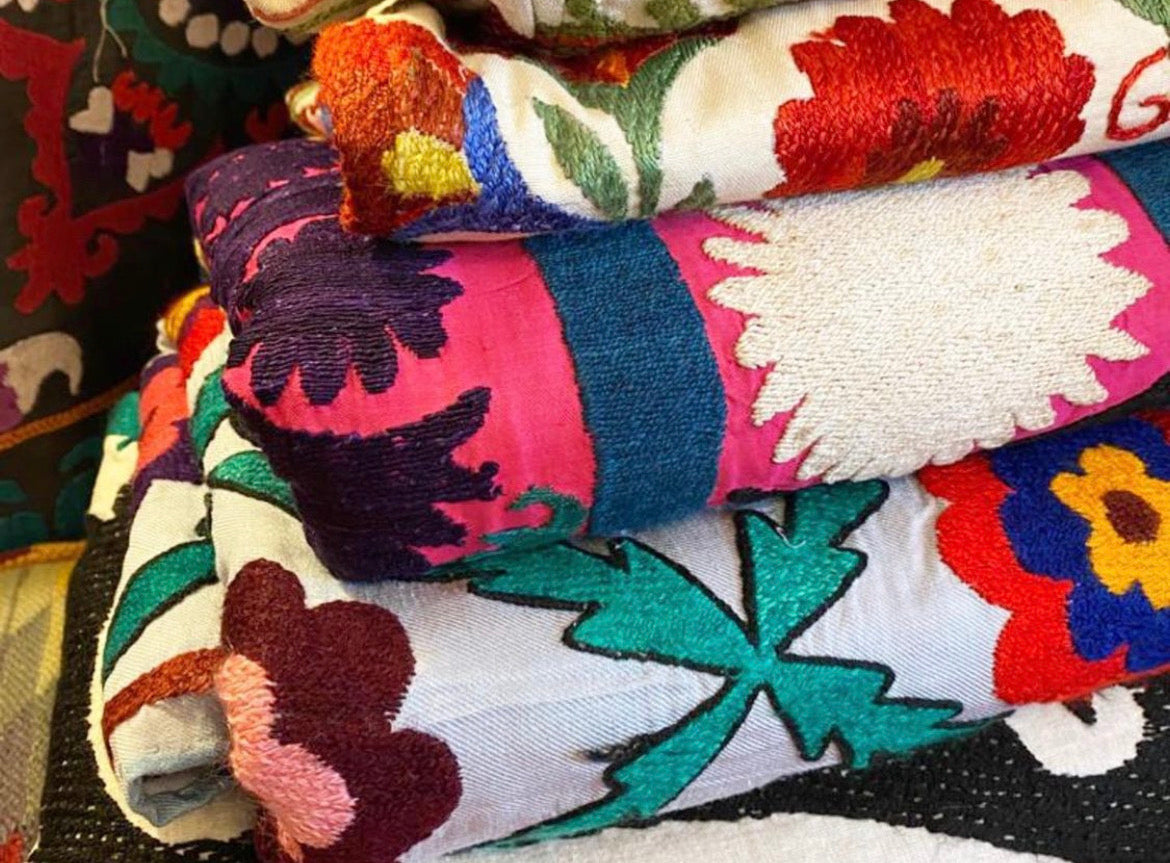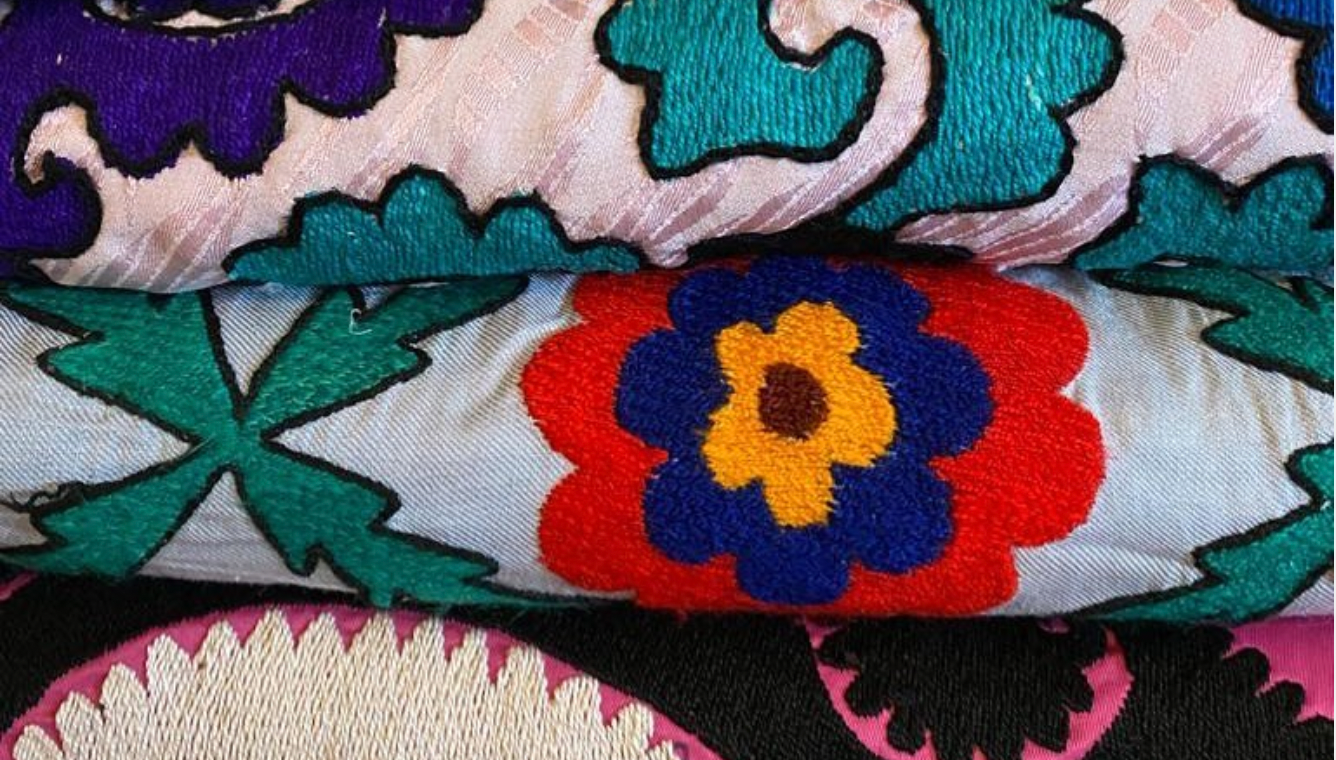


We source all of our Uzbek and Central Asian textiles from a wonderful Uzbek antique textile dealer in Istanbul, Turkey. We can never get enough of his kaleidoscopic silk and cotton Ikats and Suzanis.

Although Ikat is originally a Malay word, it is now commonly used in English to describe textiles created using the technique of resist dyeing the warp or weft prior to weaving. This method of weaving creates the signature hazy edges in the patterns.
The technique appears to have developed independently across various cultures since at least the Dark Ages, appearing in places like Pre-Columbian Peru and Guatemala, 10th century Yemen, Japan, Indonesia, India, and of course Uzbekistan.
Uzbekistan is famed for its impeccable handwoven Ikat textiles. The Uzbek word for the entire range of indigenous Ikat is 'Abrabandi' which literally means 'weaving clouds'. The cloudy look of many Ikats comes from the dyes bleeding slightly into the resist areas.
A brilliantly coloured ikat coat has historically been considered a symbol of wealth and status.Ikat fabric has been highly prized all over Central Asia since the 19th century. It is widely recognised among Ikat-weaving societies that the weaving of Ikat requires exceptional skill, and weavers often dedicate their lives to perfecting the skill.
In Uzbekistan, the local market continues to prize and value Ikats, and most women own a few pieces, even when they might otherwise choose more westernised attire dress. Ikats make up Uzbek women's trousseaus, wedding dresses and special party attire.


The Uzbek Suzani fabric panels that we sourced from our textile dealer are hand embroidered by skilled and talented artisans in Uzbekistan.
The name Suzani comes from the Persian word ‘suzan’ or ‘needle’. These panels were traditionally made by Central Asian brides' families as part of their dowry, and were presented to the groom on the wedding day.
Floral motifs are sketched onto the fabric prior to being hand embroidered stitch by stitch, making each panel truly unique. Some pen marks may be visible and remain on the final piece. These panels are often divided between many women in their village or families to embroider and are then sewn together to form a larger panel.